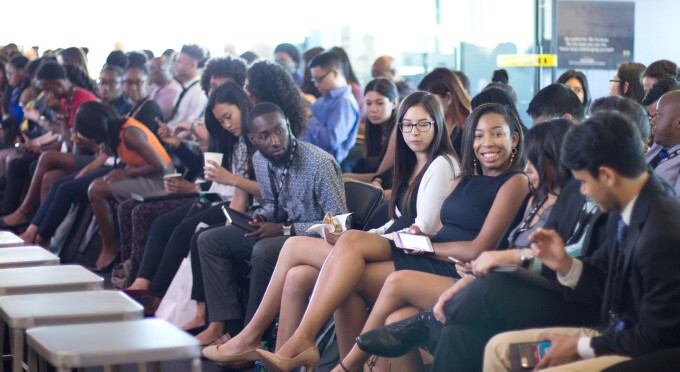Despite evidence to the contrary, the belief that a limited pool of talent makes companies unable to identify appropriate employees continues to prevail. In fact, this idea operates as the de facto rationale for diversity failings, and in turn organizations shift their focus and resources toward addressing the so-called pipeline problem. However, forward-thinking organizations, such as Publicis Media, have determined that a commitment to diversity in the present outweighs the speculative nature of addressing the problem in the future.
The Multicultural Talent Pipeline evolved from recognizing a distinct and real blind spot, according to Lisa Torres, President of Publicis Media’s U.S.-based multicultural practice. “When I joined the business I didn’t see other people like me,” she says. “In meetings, I was often the only woman or the only person of color.” Torres astutely realized this gap represented an important opportunity that Publicis Media was well positioned to address. As home to Starcom, Zenith, Spark Foundry, Blue 449 and Performics, the expansive holding company’s backdrop fostered several catalysts:
- Across company units there existed an engaged network of diverse professionals who were committed to the concept of diversity.
- The business units represented the wide breadth of available professionals within advertising.
Perhaps most important? The commitment came from the top of the organization. Tim Jones, CEO, Publicis Media North America, has been an outspoken proponent for addressing diversity and inclusion on multiple fronts. It matters deeply when highly visible corporate leaders ensure that the mandate is a top-down initiative while also empowering those like Torres to put in place the key elements that make a program like the Multicultural Talent Pipeline actually work. These ingredients combined to make up the foundation for what is now known as the Multicultural Talent Pipeline, a formal program that addresses diversity by both leveraging an existing committed talent pool while also offering a varied experience to young people going through the program.

The program is offered during Advertising Week over the course of two days. Participating students from a wide range of schools are invited to participate in a career fair and attend a conference covering a host of topics germane to the media, marketing and advertising industry. (See photos at top, above and below.)
“Our core goal for clients is to develop brand messages that resonate with their consumers,” says Solange Claudio, President, Moxie. “As that consumer base continues to get more and more diverse, it becomes critical that our own workforce mirrors that diversity so that we can make those culturally relevant connections with consumers. MCTP is important to us because of the access we gain to a wonderful array of the multicultural talent that is, and will become even more so, critical to our future success.”